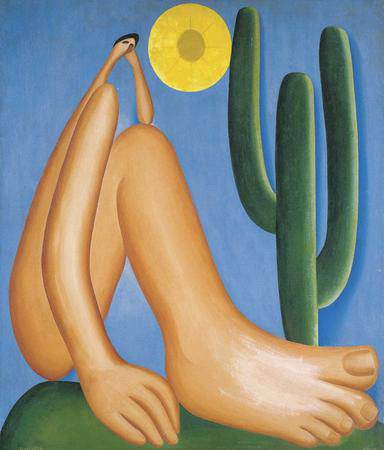
Tarsila do Amaral: “Abaporu”.
Tarsila do Amaral: Inventing Modern Art in Brazil Museum of Modern Art presents ‘Tarsila do Amaral: Inventing Modern Art in Brazil’. From February 11th to June 3rd 2018.]]>
Source: Museum of Modern Art
Tarsila do Amaral (Brazilian, 1886–1973) is a foundational figure for the history of modernism in Latin America. The first exhibition in the United States exclusively devoted to the artist focuses on her pivotal production from the 1920s, from her earliest Parisian works, to the emblematic modernist paintings produced in Brazil, ending with her large-scale, socially driven works of the early 1930s. The exhibition features nearly 130 artworks, including paintings, drawings, sketchbooks, photographs, and other historical documents drawn from collections across Latin America, Europe, and the United States.
Born in São Paulo at the turn of the 19th century, Tarsila―as she is affectionately known in Brazil―studied piano, sculpture, and drawing before leaving for Paris in 1920 to attend the Académie Julian. Throughout subsequent sojourns in Paris, she studied with André Lhote, Albert Gleizes, and Fernand Léger, fulfilling what she called her “military service in Cubism,” ultimately arriving at her signature painterly style of synthetic lines and sensuous volumes depicting landscapes and vernacular scenes in a rich color palette. The exhibition follows her journeys between France and Brazil, through Rio de Janeiro and Minas Gerais, charting her involvement with an increasingly international artistic community, and her role in the emergence of modernism in Brazil; in 1928, Tarsila painted “Abaporu”, which quickly spawned the “Anthropophagous Manifesto”, and became the banner for this transformative artistic movement that sought to digest external influences and produce an art for and of Brazil itself.
The exhibition is organized by The Museum of Modern Art and the Art Institute of Chicago.
Related content
‘Marisa Merz: The Sky Is a Great Space’ (exhibition, 2017)
Follow us on:


